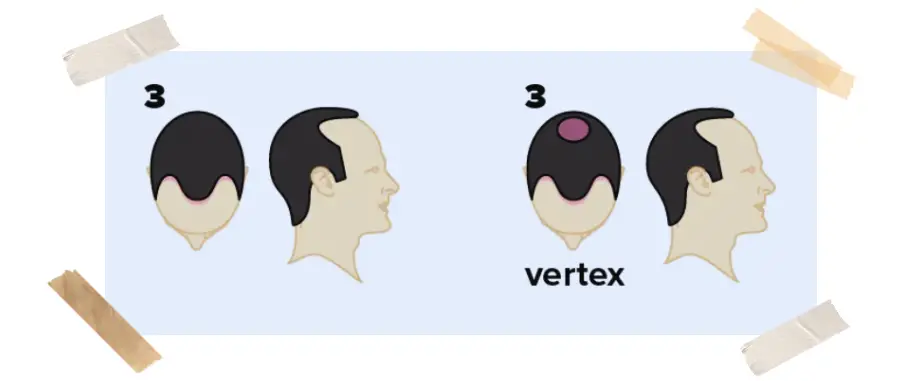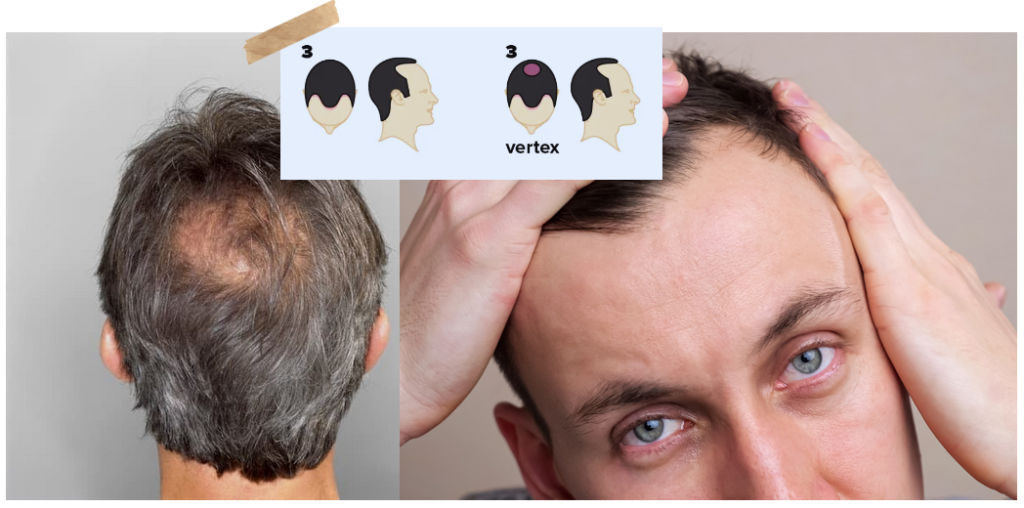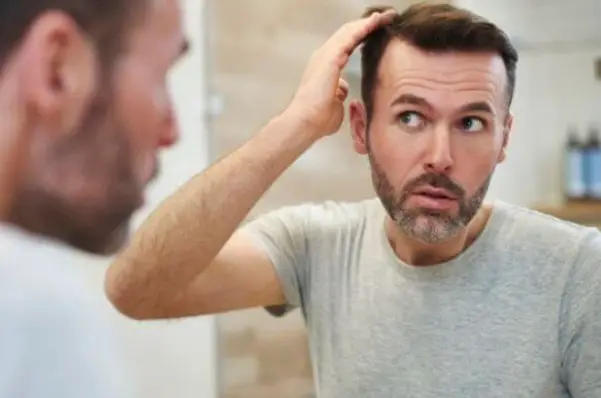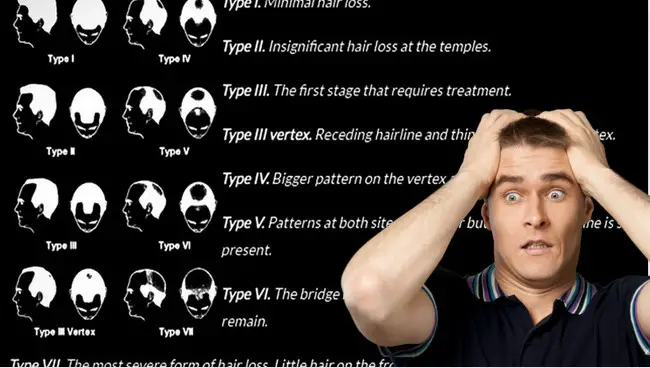Embarking on your Stage 3 hair loss treatment journey can feel overwhelming, but it doesn’t have to be. With the right knowledge and tools, you can effectively manage your hair loss and even regain some of your lost hair. In this comprehensive guide, we’ll explore the causes of Stage 3 hair loss, treatment options, and preventative measures to help you take control of your hair health. Let’s dive in.
Hair loss can be a distressing experience, but it’s important to remember that you’re not alone. Millions of people worldwide are dealing with hair loss, and there are effective treatments available. If you’re experiencing Stage 3 hair loss, this comprehensive guide is for you. We’ll explore the causes, treatment options, and preventive measures for Stage 3 hair loss, helping you make informed decisions about your hair health.
Understanding Stage 3 Hair Loss
When it comes to hair loss, it’s crucial to understand the different stages and what they mean for your hair health. Stage 3 hair loss, as classified by the Hamilton-Norwood scale, is a significant point in the hair loss journey. This stage is characterized by a deep hairline recession around the temples, giving the hairline a curved “M” or “U” shape when viewed from above. The affected areas may be completely without hair or only lightly covered.

In the class A version of the Norwood scale, or stage 3A, the dips in the hairline may be slightly less defined. People experiencing stage 3 vertex balding will also begin losing hair on the crown of their head, often starting as one small bald spot. This is the first stage where clinically significant balding appears.
The Hamilton-Norwood scale is a commonly used classification system for male pattern baldness, which has seven stages. Here’s a quick rundown:
- Stage 1: Little or no hair loss or hairline recession
- Stage 2: Slight hair loss near the skin between the ears and forehead (temples)
- Stage 3: Deep hairline recession around the temples and possible hair loss on the crown
- Stage 4: Very deep hairline recession and a loss of hair at the top of the head (crown)
- Stage 5: Hairline recession connects to the bald spot on the crown
- Stage 6: Hair loss at the vertex meets the hair loss at the temples
- Stage 7: Only a thin strip of hair around the head remains
For people experiencing stage 3 of the Norwood scale, a follicular unit excision (FUE) hair transplant is usually the preferred solution to help restore hair growth. However, it’s essential to understand that this is not the only option. There are other treatments available that can slow down or even reverse hair loss at this stage.
If you’re noticing signs of stage 3 hair loss, don’t panic. It’s crucial to take action as soon as possible to prevent further progression. You can start by exploring our comprehensive guide on stage 2 hair loss treatment and stage 1 hair loss treatment. These resources provide valuable information on early intervention strategies that can help slow down the progression of hair loss.
Remember, the sooner you act, the better your chances of preserving your existing hair and promoting new growth. Don’t wait until your hair loss progresses to later stages. Start exploring your treatment options today and take the first step towards reclaiming your hair health.
Related Articles:
- Early Stages of Balding Crown
- Male Pattern Baldness Stages
- Norwood Scale
- M-Shaped Hairline
- How to Tell If You’re Balding
Causes of Stage 3 Hair Loss
Understanding the causes of Stage 3 hair loss can help you take proactive steps to manage your hair health. While hair loss can be influenced by a variety of factors, there are three main causes that you should be aware of: genetic factors, hormonal changes, and lifestyle/environmental factors.
Genetic Factors
Genetics play a significant role in hair loss. If your parents or grandparents experienced hair loss, there’s a good chance you may too. This type of hair loss, known as androgenetic alopecia or male pattern baldness, is the most common cause of hair loss in men. It’s linked to the presence of a hormone called dihydrotestosterone (DHT), which can cause hair follicles to shrink and eventually stop producing hair.
Hormonal Changes
Hormonal imbalances can also contribute to hair loss. Conditions like thyroid disease, anemia, and low vitamin levels can disrupt the normal cycle of hair growth and lead to hair thinning and loss. It’s important to get regular check-ups and blood tests to monitor your hormone levels and ensure they’re in balance.
Lifestyle and Environmental Factors
Lifestyle and environmental factors can also play a role in hair loss. Stress, poor nutrition, smoking, and exposure to pollutants can all contribute to hair thinning and loss. Maintaining a healthy lifestyle, including a balanced diet and regular exercise, can help promote hair health and slow down hair loss.
If you’re experiencing Stage 3 hair loss, it’s important to understand these causes and take proactive steps to manage your hair health. You can start by exploring our comprehensive guides on male pattern baldness stages and how to tell if you’re balding. These resources provide valuable information on understanding and managing hair loss.
Remember, the sooner you understand the causes of your hair loss, the better equipped you’ll be to take action and find effective treatments. Don’t wait until your hair loss progresses to later stages. Start exploring your treatment options today and take the first step towards reclaiming your hair health.
Related Articles:
Treatment Options for Stage 3 Hair Loss
When it comes to treating Stage 3 hair loss, there are several options available. These range from over-the-counter products to prescription medications, laser therapy, and even surgical procedures. Let’s explore these options in detail.
Over-the-Counter Products
Over-the-counter products like minoxidil (Rogaine) can help slow hair loss and even promote new hair growth. Minoxidil is a topical treatment that you apply directly to your scalp. It works by prolonging the growth phase of hair follicles, which can result in thicker, fuller hair.
Prescription Medications
Prescription medications like finasteride (Propecia) can also be effective in treating hair loss. Finasteride works by blocking the production of DHT, a hormone that can cause hair follicles to shrink and stop producing hair. It’s important to note that finasteride is a prescription medication and should only be used under the supervision of a healthcare provider.
Laser Therapy
Laser therapy, such as the FDA-Cleared Kiierr Laser Cap System for Hair Growth, can also be an effective treatment for Stage 3 hair loss. This system uses low-level laser therapy (LLLT) to stimulate hair follicles and promote hair growth. It’s a non-invasive, painless treatment that you can use in the comfort of your own home.
Surgical Procedures
In more severe cases of hair loss, surgical procedures like hair transplants may be considered. During a hair transplant, hair follicles are taken from a part of the scalp where hair is still growing and transplanted to the areas where hair has been lost. This can be an effective way to restore hair growth, but it’s also more invasive and costly than other treatment options.
It’s important to remember that everyone’s hair loss journey is unique, and what works for one person may not work for another. It’s always a good idea to consult with a healthcare provider or a hair loss specialist to discuss your treatment options.
If you’re interested in learning more about these treatments, check out our comprehensive guides on male pattern baldness stages and how to tell if you’re balding. These resources provide valuable information on understanding and managing hair loss.
Remember, the sooner you start treatment, the better your chances of slowing down hair loss and promoting new hair growth. Don’t wait until your hair loss progresses to later stages. Start exploring your treatment options today and take the first step towards reclaiming your hair health.
Preventing Further Hair Loss at Stage 3
While treating Stage 3 hair loss is crucial, it’s equally important to take steps to prevent further hair loss. Here are some strategies that can help you maintain your existing hair and potentially slow down the progression of hair loss.
Maintain a Healthy Lifestyle
A healthy lifestyle can have a significant impact on your hair health. This includes eating a balanced diet rich in vitamins and minerals that support hair growth, such as vitamin D, iron, and biotin. Regular exercise can also help by improving blood circulation, which can stimulate hair follicles.
Avoid Harsh Hair Care Products
Certain hair care products can be harsh on your hair and scalp, potentially leading to hair loss. Avoid products that contain harsh chemicals and opt for natural, gentle products instead. For example, our More Hair Organic Shampoo is a great choice for maintaining hair health.
Use Hair Loss Treatments Consistently
Consistency is key when it comes to hair loss treatments. Whether you’re using minoxidil, finasteride, or a laser cap system, it’s important to use these treatments consistently as directed. Skipping treatments or not using them as directed can reduce their effectiveness.
Consider Natural Remedies
Natural remedies, such as certain herbs and supplements, can also support hair health. Biotin supplements and gummies, for example, can help strengthen hair and promote growth. However, it’s important to consult with a healthcare provider before starting any new supplement regimen.
Regular Check-ups
Regular check-ups with a healthcare provider or a hair loss specialist can help monitor your hair health and catch any potential issues early. They can also provide personalized advice and treatment recommendations based on your specific needs and circumstances.
Remember, preventing further hair loss is a proactive process. By taking these steps, you can help maintain your existing hair and potentially slow down the progression of hair loss. For more information on managing hair loss, check out our comprehensive guide on how to tell if you’re balding.
The Consequences of Ignoring Stage 3 Hair Loss
Ignoring Stage 3 hair loss can lead to more severe stages of hair loss, which can be more difficult and costly to treat. Here’s why it’s crucial to take action as soon as you notice signs of Stage 3 hair loss.
Progression to More Severe Stages
Hair loss is a progressive condition. If left untreated, Stage 3 hair loss can progress to Stage 4 and beyond, where hair loss becomes more extensive and noticeable. At these stages, the hairline recession connects to the bald spot on the crown, and only a thin strip of hair around the head remains. This can significantly impact your appearance and self-esteem.
Increased Treatment Complexity and Cost
As hair loss progresses, treatment becomes more complex and costly. While over-the-counter products and prescription medications can be effective in the early stages, more severe stages of hair loss often require surgical procedures like hair transplants. These procedures are more invasive and can cost thousands of dollars.
Emotional Impact
Hair loss can have a significant emotional impact, affecting your self-esteem and mental health. By ignoring Stage 3 hair loss, you risk experiencing these emotional effects as your hair loss progresses.
Increased Need for Hair Grafts
If you decide to undergo a hair transplant, the number of hair grafts you need increases as your hair loss progresses. For example, while you might need around 2000 grafts for Stage 3 hair loss, this number can significantly increase for later stages. This not only increases the cost of the procedure but also the time and recovery involved.
Ignoring Stage 3 hair loss can have serious consequences. However, it’s never too late to take action. By starting treatment early, you can slow down the progression of hair loss and potentially restore some of your lost hair. Don’t wait until your hair loss progresses to later stages. Start exploring your treatment options today and take the first step towards reclaiming your hair health.
Frequently Asked Questions about Stage 3 Hair Loss Treatment
In this section, we’ll address some of the most frequently asked questions about Stage 3 hair loss treatment.
Is Stage 3 hair loss reversible?
Yes, with the right treatment, it’s possible to slow down or even reverse Stage 3 hair loss. Treatments like the FDA-cleared Kiierr Laser Cap System, illumiflow 272 Pro Laser Cap, and topical finasteride and minoxidil can stimulate hair growth and help restore some of the lost hair. However, results can vary from person to person.
Can Stage 4 baldness be cured?
While Stage 4 baldness can’t be completely cured, treatments can help slow down the progression of hair loss and potentially restore some hair. More invasive treatments like hair transplants may be necessary at this stage.
For more information on stage 4 hair loss treatment, check out our comprehensive guides on Norwood 4 it explain how norwood 4 hair transplant and other hair loss treatment can regrowth hair.
How quickly does balding progress?
The speed at which balding progresses can vary greatly from person to person. It can be influenced by factors like genetics, diet, stress levels, and overall health. Regular check-ups with a healthcare provider or a hair loss specialist can help monitor your hair health and catch any potential issues early.
How many grafts do you need for Stage 3?
For Stage 3 hair loss, you might need around 2000 grafts for a hair transplant. However, this can vary depending on the extent of your hair loss and your individual needs.
What are the big 3 hair loss treatments?
The “big 3” hair loss treatments typically refer to minoxidil, finasteride, and ketoconazole. These treatments have been proven to be effective in treating hair loss and are often recommended by healthcare providers.
Remember, if you have any concerns about hair loss, it’s always best to consult with a healthcare provider or a hair loss specialist. They can provide personalized advice and treatment recommendations based on your specific needs and circumstances.
For more information on managing hair loss, check out our comprehensive guides on the big 3 hair loss treatments.
Conclusion: Taking Control of Your Hair Loss Journey
In conclusion, Stage 3 hair loss doesn’t have to be a life sentence. With the right knowledge, treatment options, and proactive measures, you can take control of your hair loss journey. Remember, the key to successful treatment is early intervention. The sooner you start treating your hair loss, the better your chances of slowing down the progression and even regaining some of your lost hair.
Whether you opt for the FDA-cleared Kiierr Laser Cap System, the popular illumiflow 272 Pro Laser Cap, or topical treatments like finasteride and minoxidil, the most important thing is to stay consistent with your treatment regimen. Pair these treatments with a healthy lifestyle, proper nutrition, and stress management techniques to boost your overall hair health.
Don’t let the fear of progressing to Stage 4 baldness paralyze you. Instead, let it motivate you to take action. Remember, you’re not alone in this journey. There are numerous resources and support systems available to help you navigate this challenging time.
Take control of your hair loss journey today. Act now, and unlock the potential for healthier, fuller hair.
- AI Powered Bald Filter Online 2024: See Yourself with No Hair! - January 19, 2024
- Harklinikken Bad Reviews 2024: Analyzing Negative Feedbacks - January 18, 2024
- How to Get the Alex Eubank Hair | Step-By-Step Tutorial 2024 - January 18, 2024







